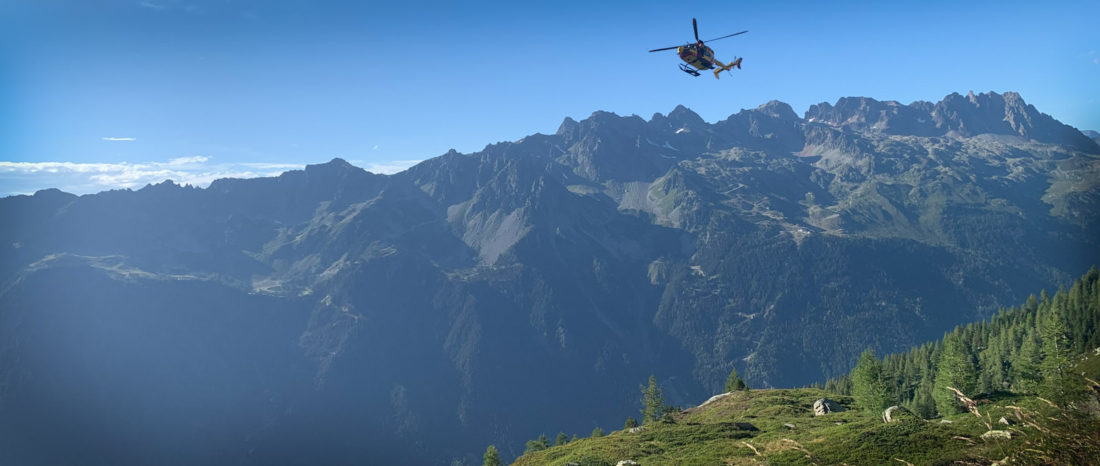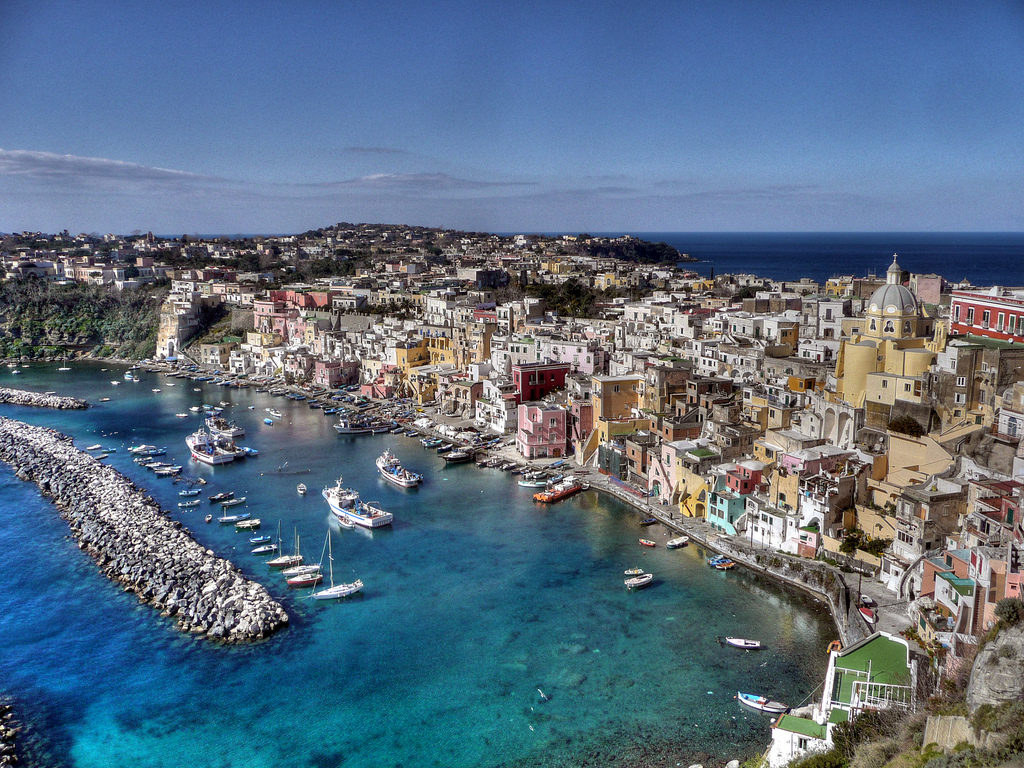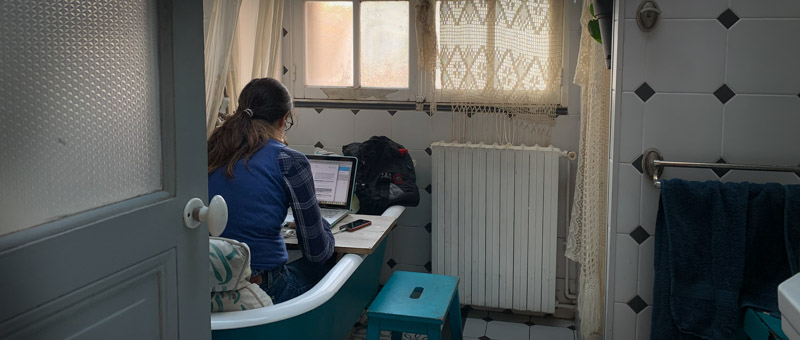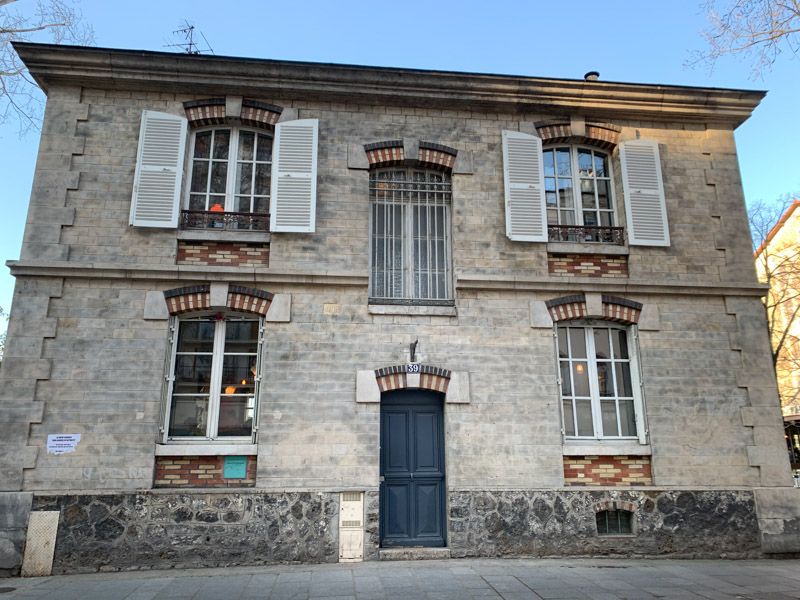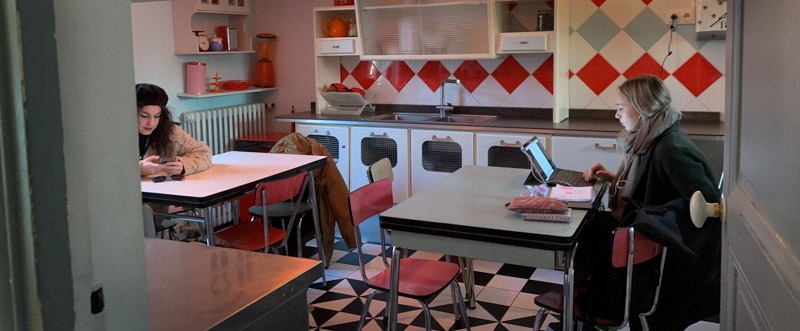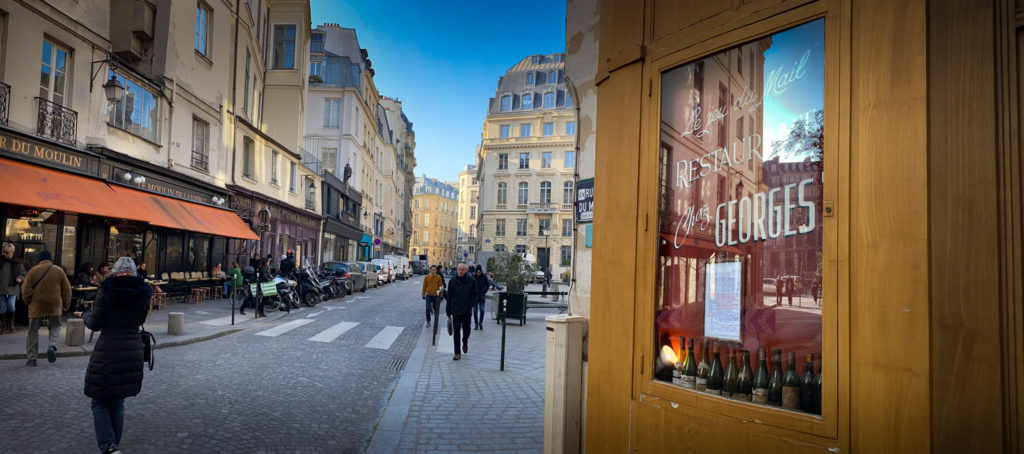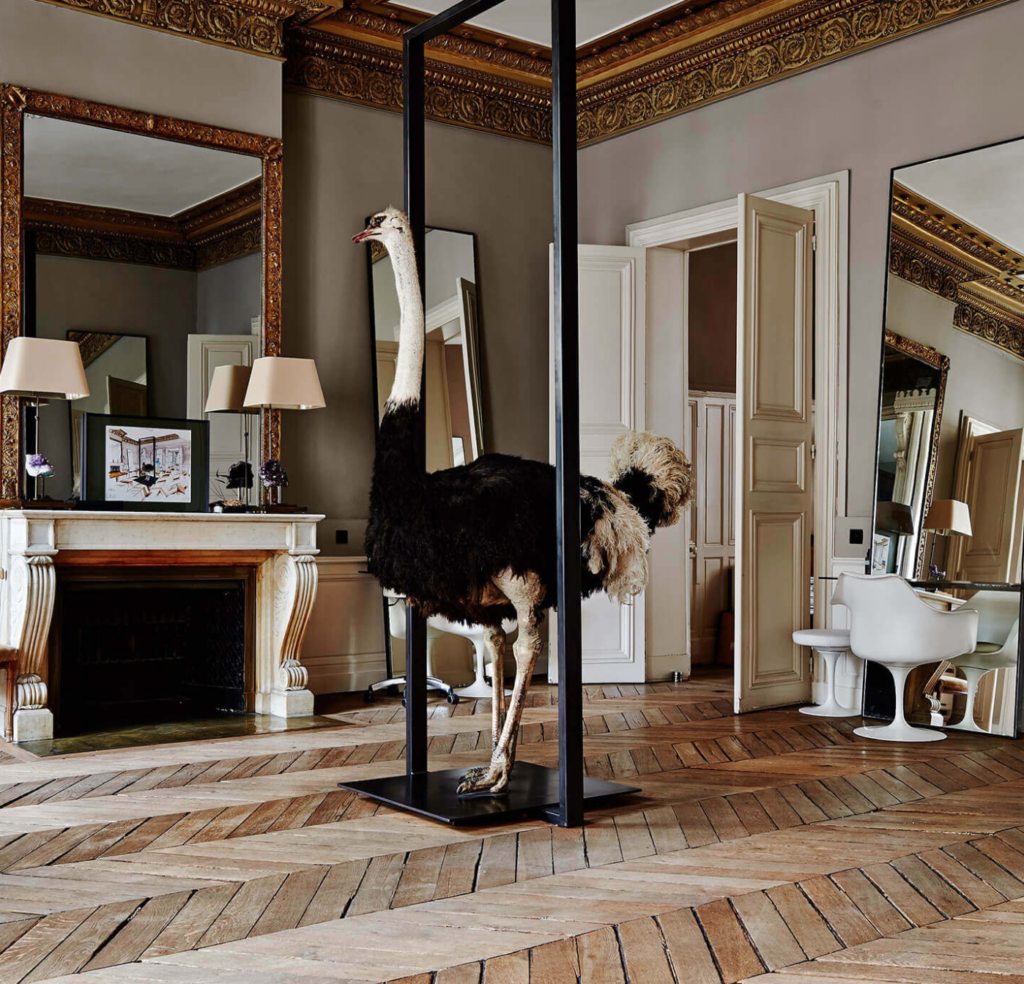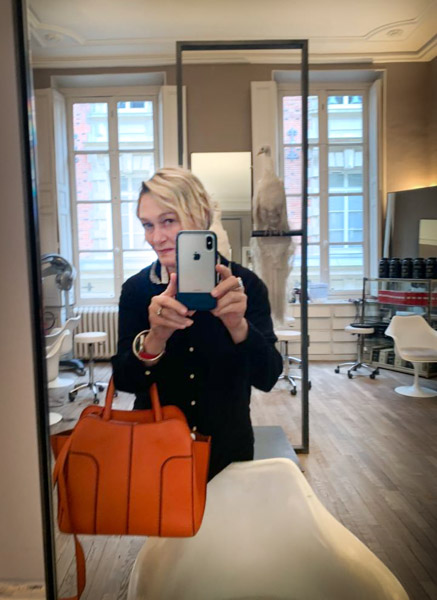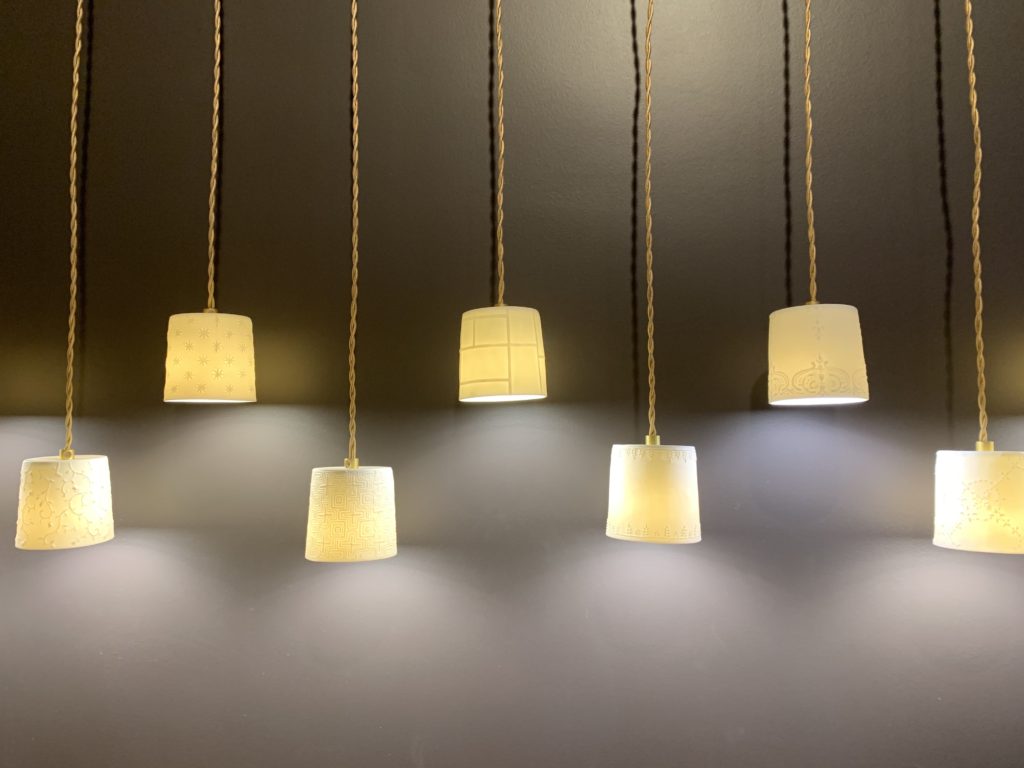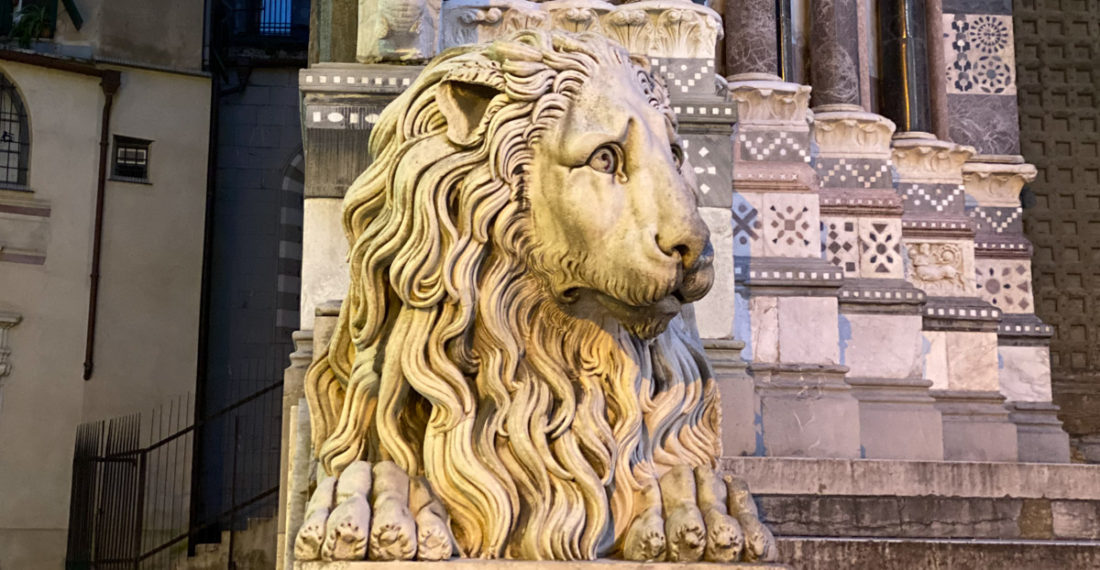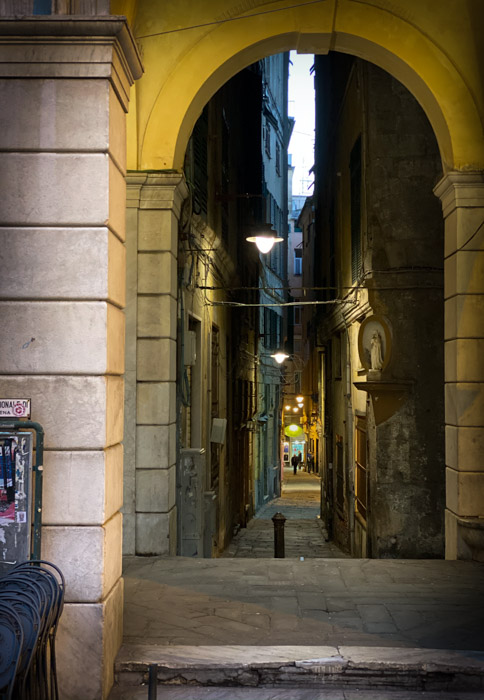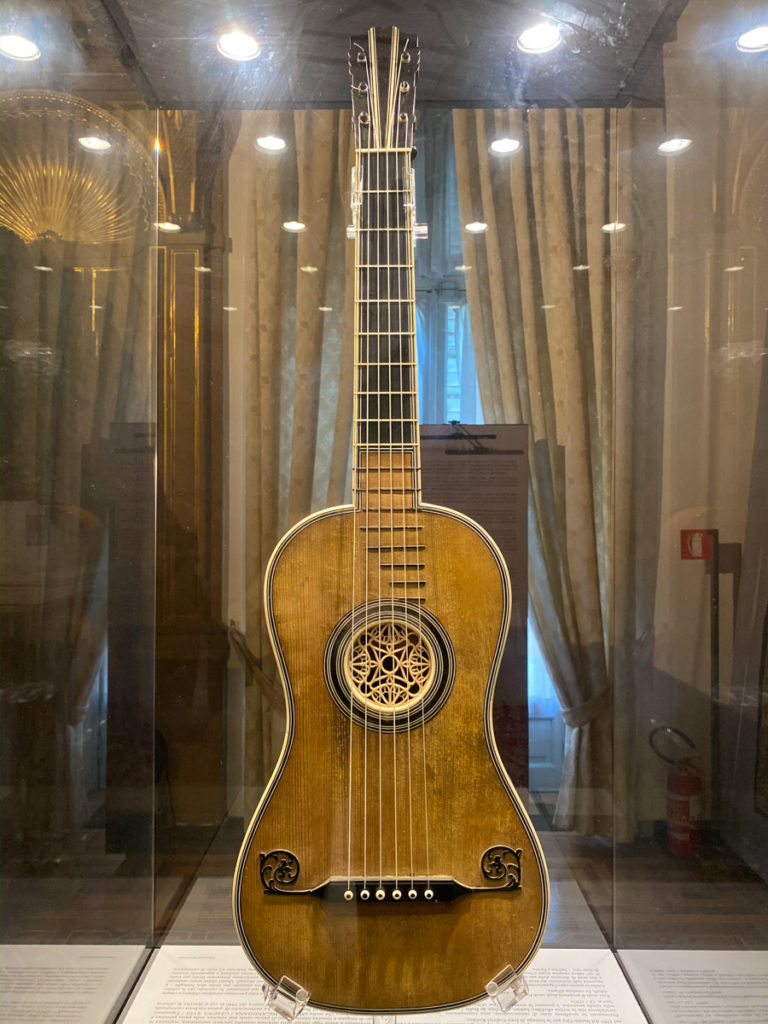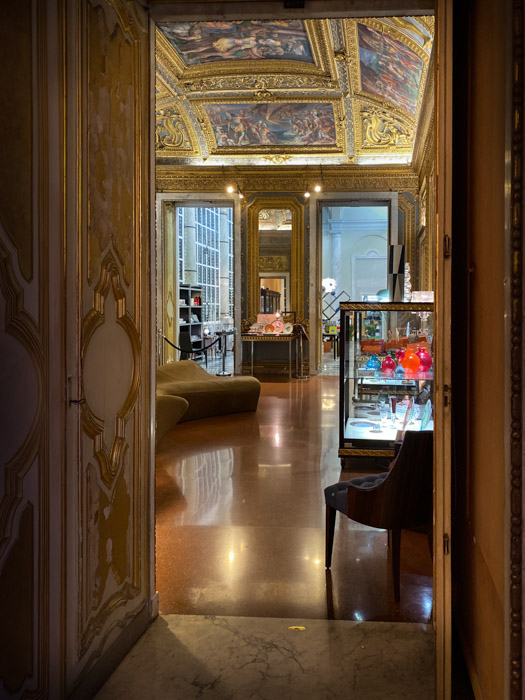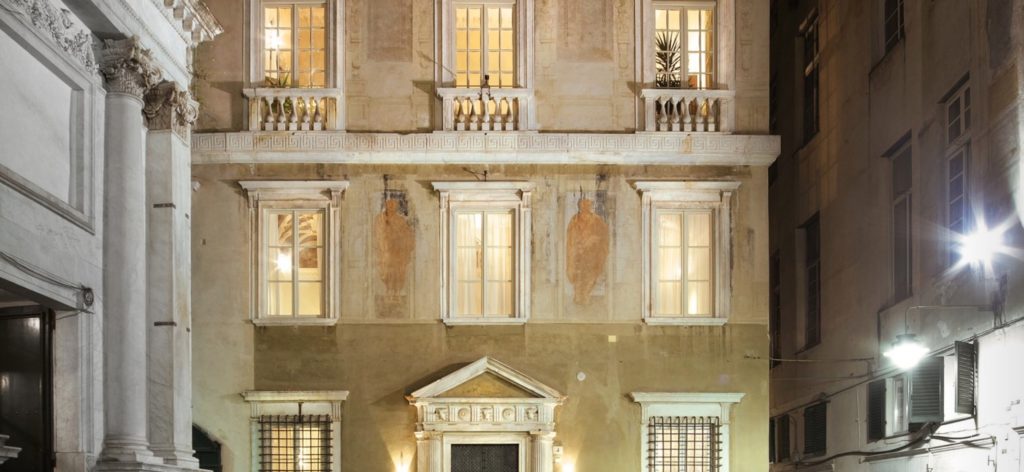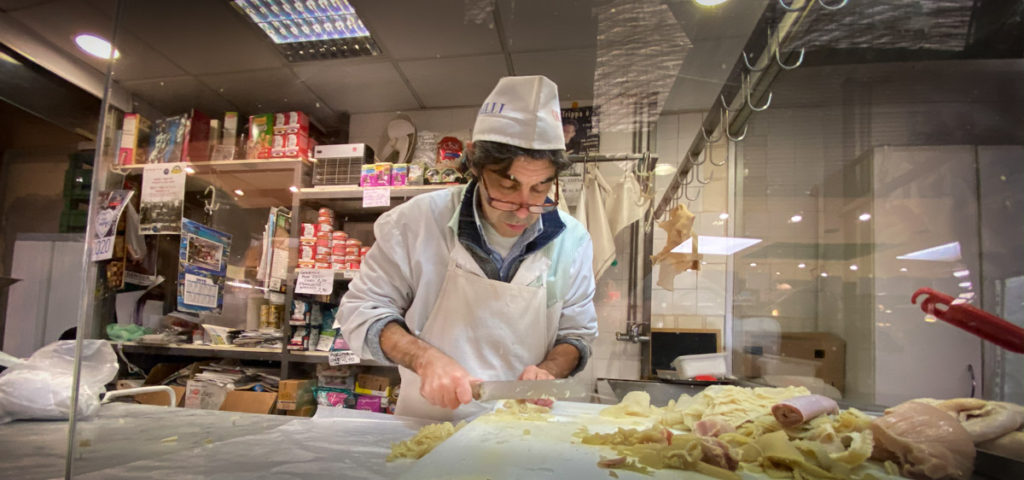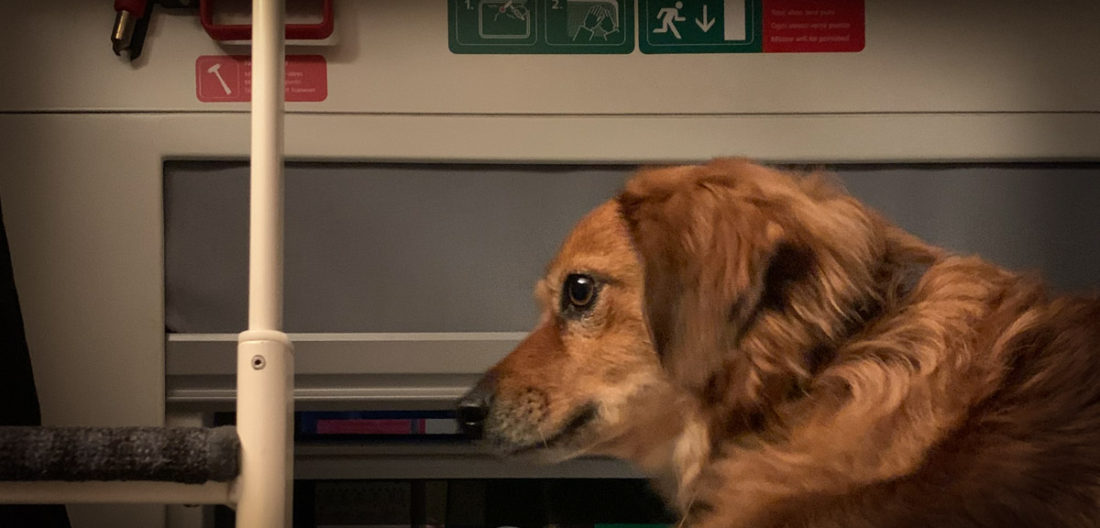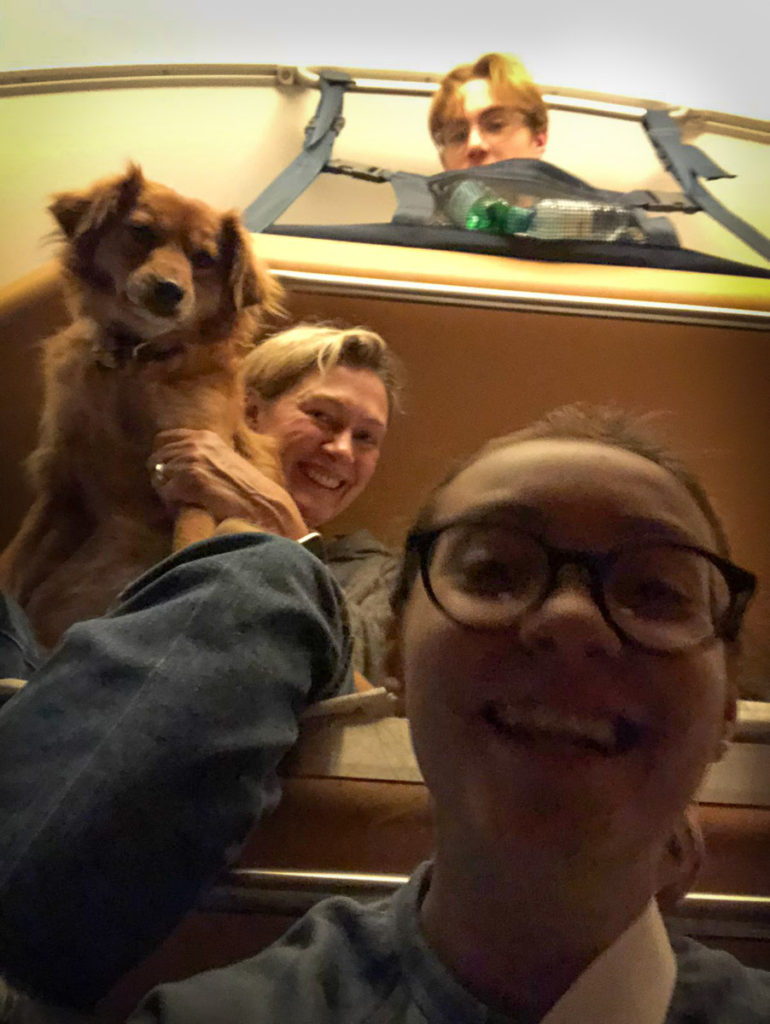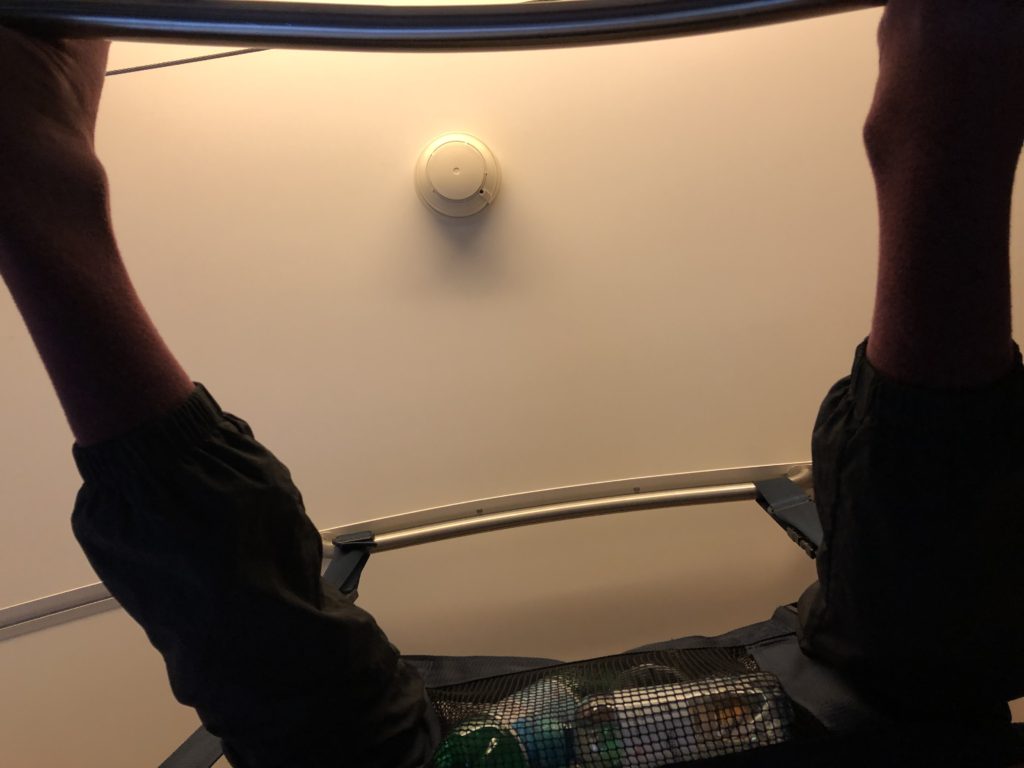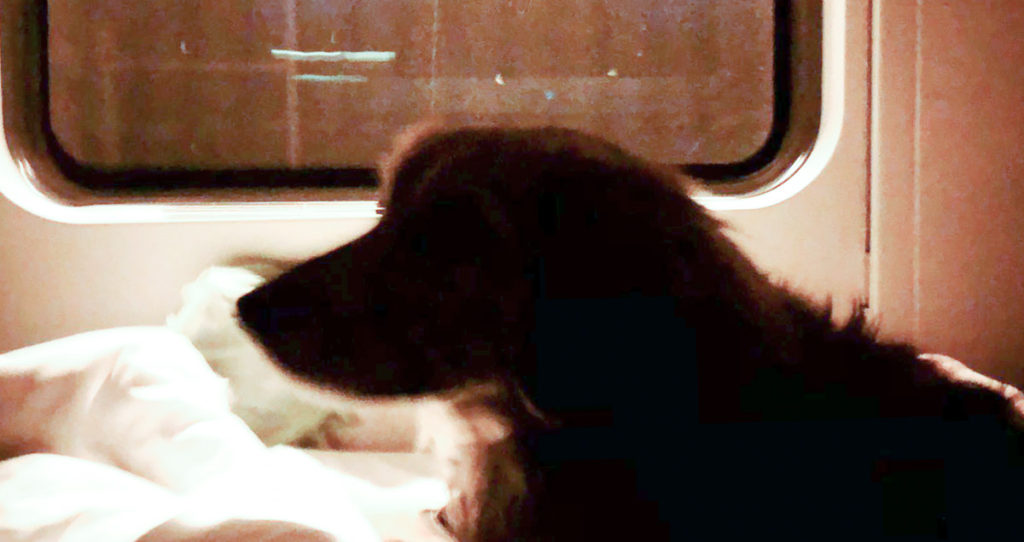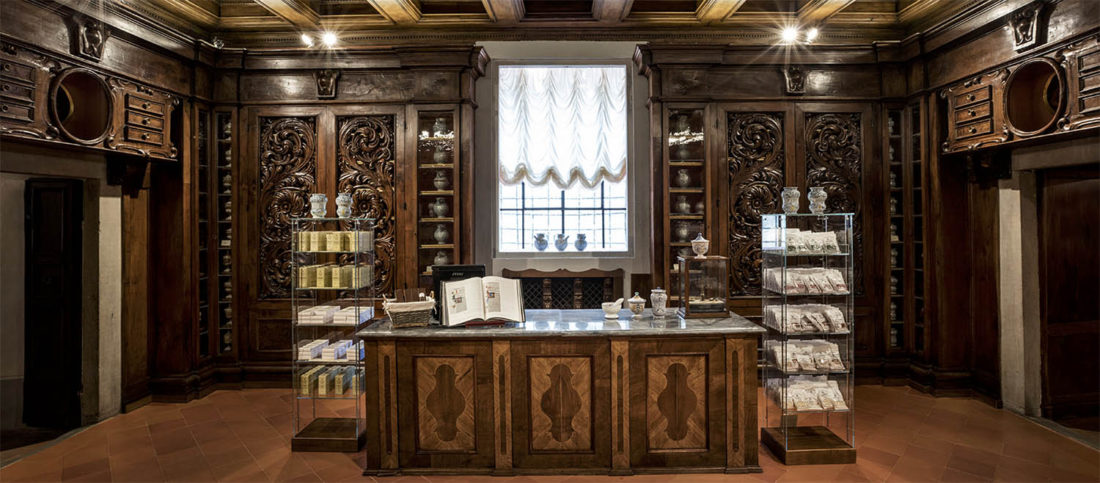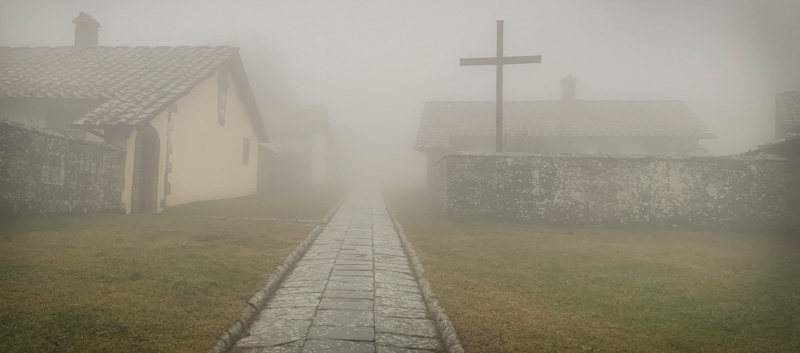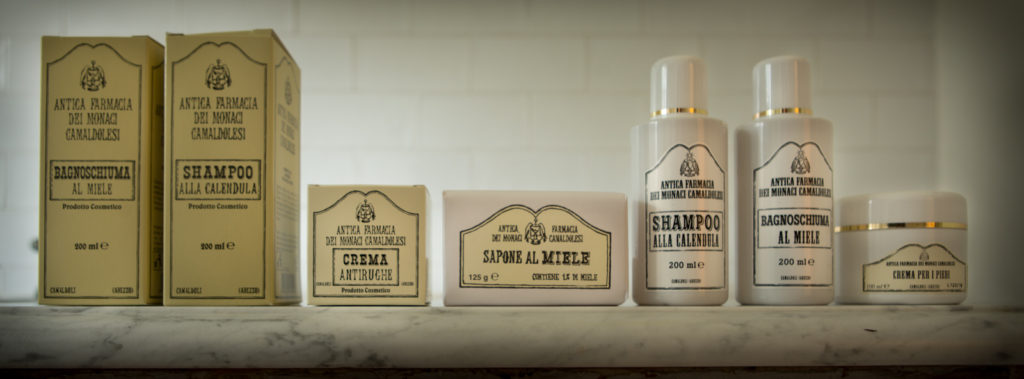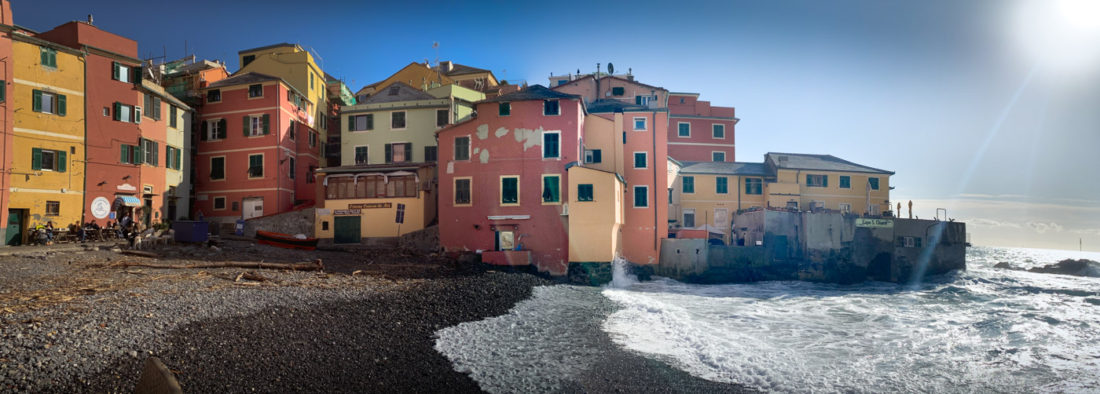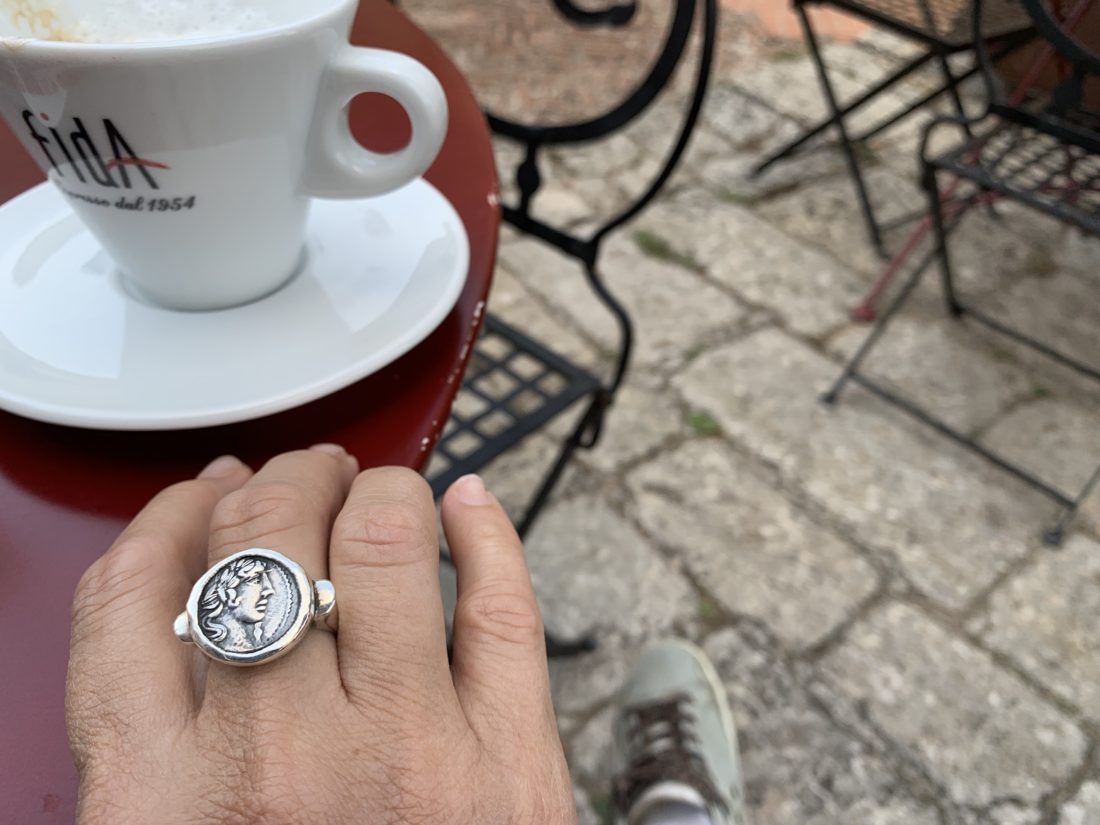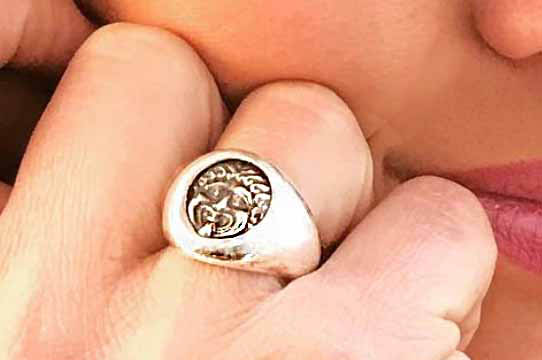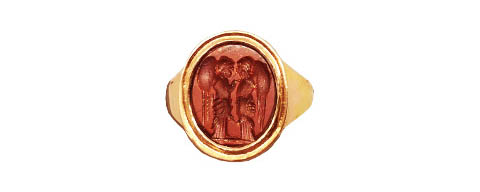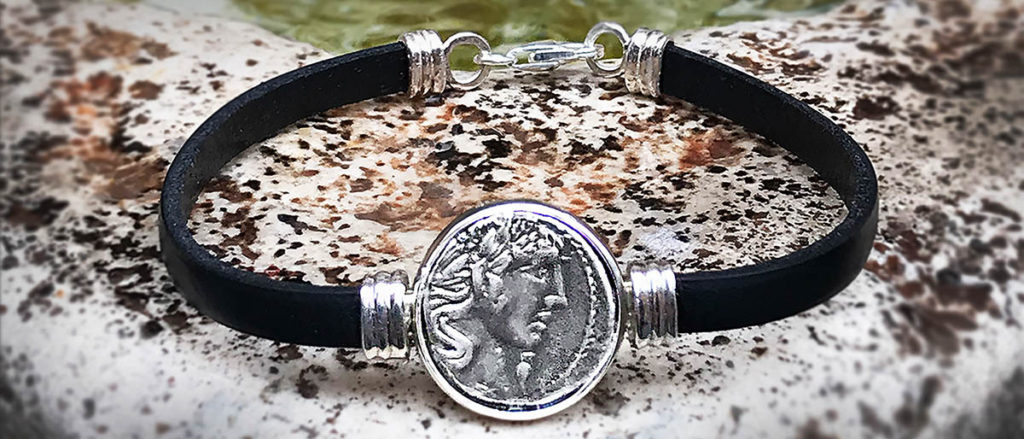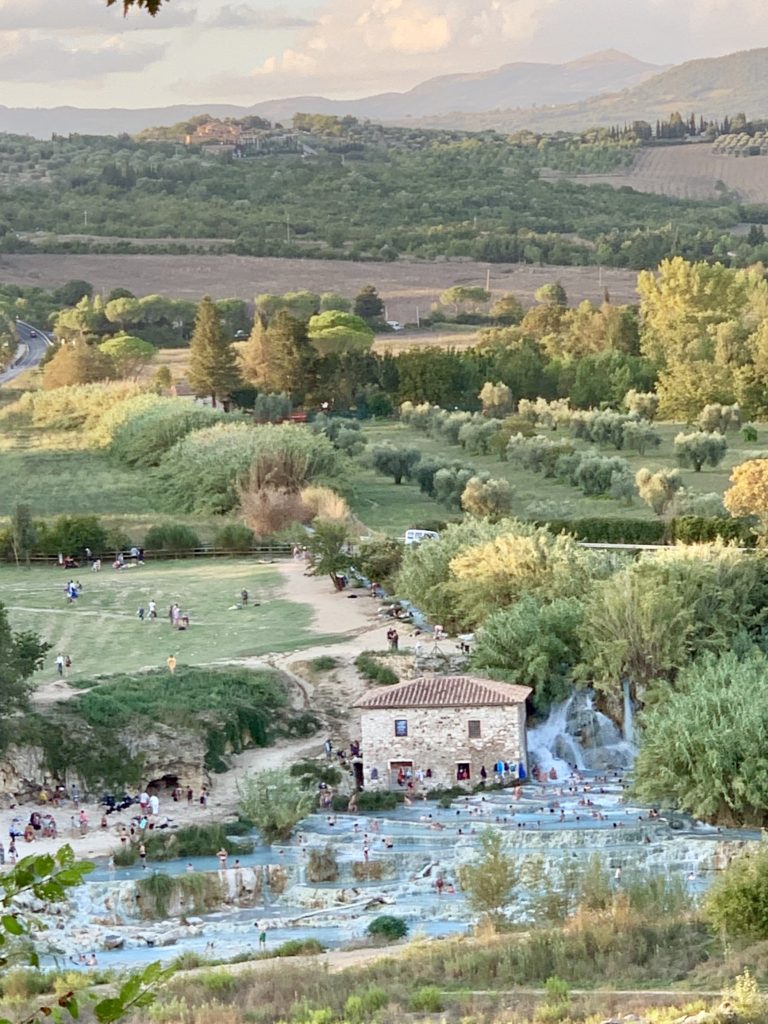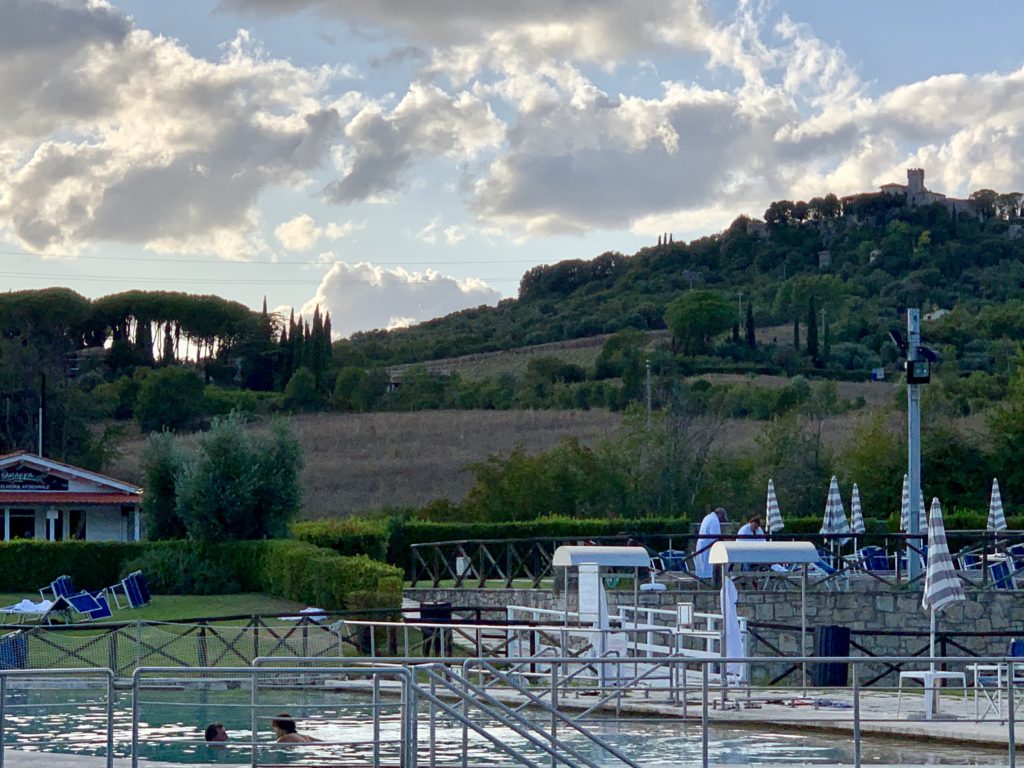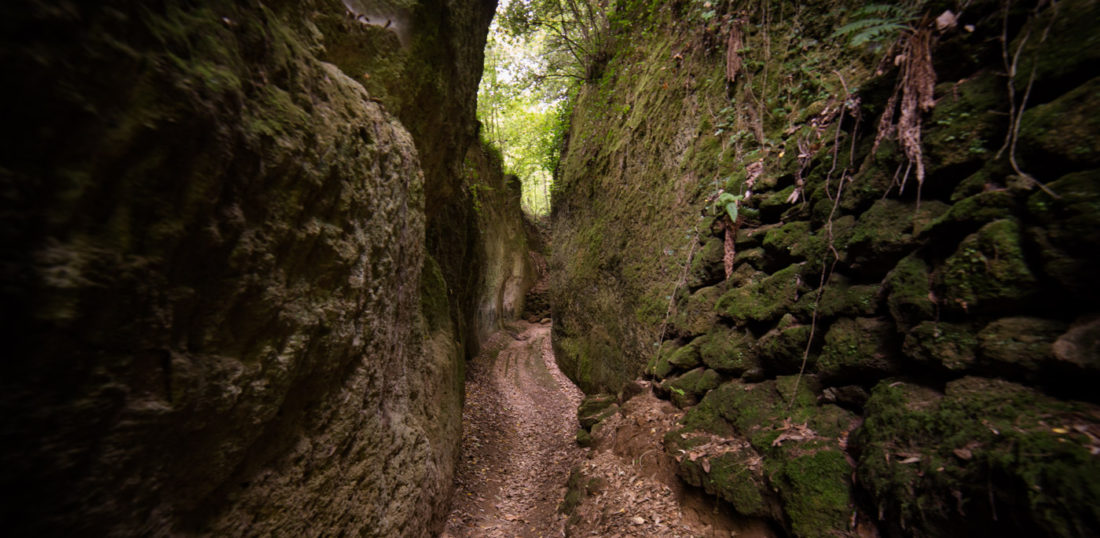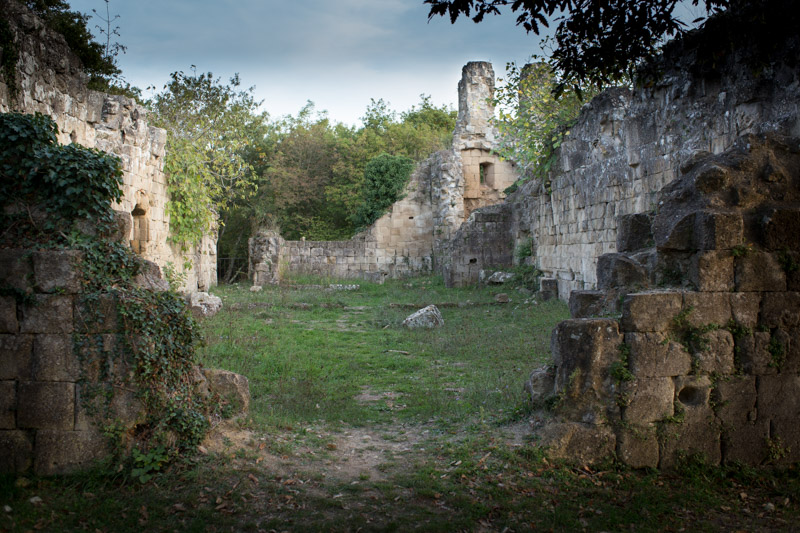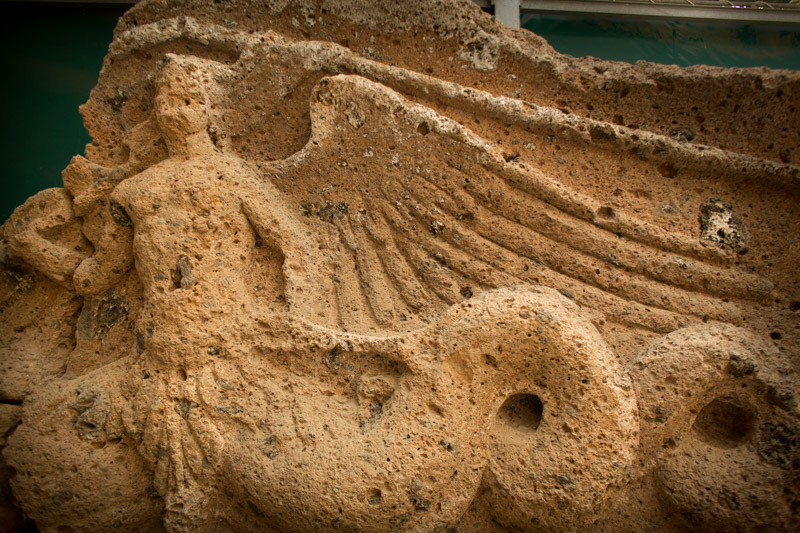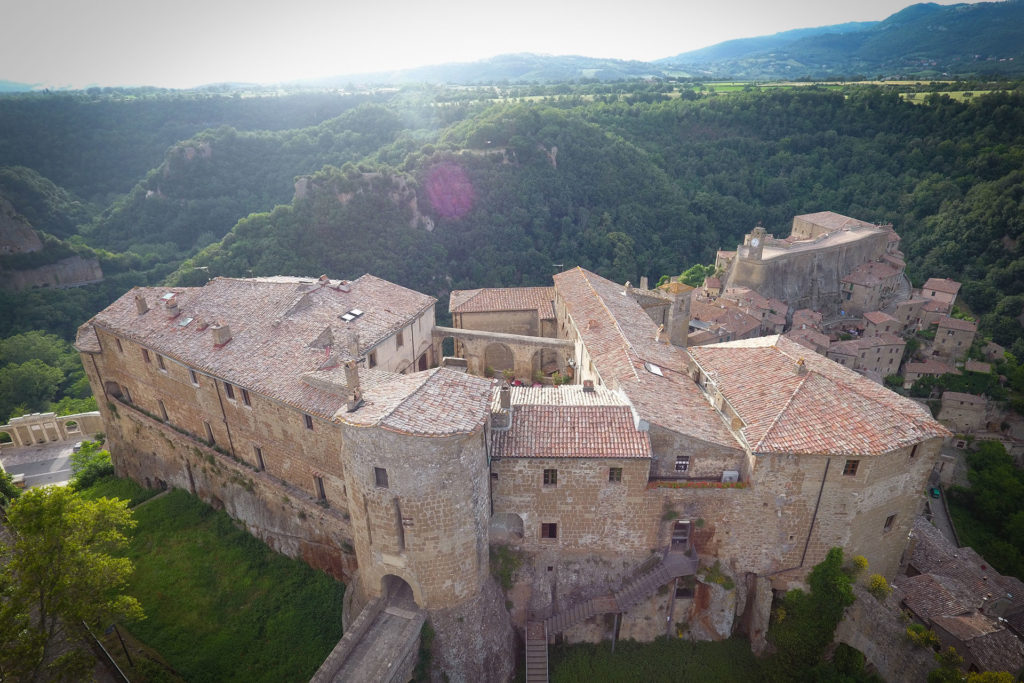My Mt. Blanc helicopter rescue
I drove Sebastian to the airport last Monday to fly back to London for school. Saying goodbye was even harder than usual as I don’t know when or where I will be able to see either kid next. I feel like a mother saying goodbye to a child about get in a covered wagon and go far into the wilds. Like Michigan.
Maybe a road trip to Paris would head off any incoming gloom. John can’t come with me as he’s been having back pain so I set out by myself with adventure in my heart and a rallying cry of “you never know what will happen next” on my lips. God, if he exists, heard me. I do not use the “he” pronoun lightly as I now am quite sure that the long held presumption that God is a man is true and that he decided that I need to be taught a lesson or two as I chose to set out on my own to have fun while my husband is lying on ice back at home.
My trip begins, complete with coronavirus protective protocols, routes, and equipment. My first night out is in Chamonix, at a really lovely inn. After a killer breakfast I ask the woman at the desk for good day hike ideas. I had already done research online and what she said matched what I’d found. So far I am adulting very impressively. Amazing views of Mt. Blanc, a great 6 hour or so hike, what could go wrong?
I set off, on my own, with my half-liter, eco-friendly bottle of water in hand. I start to get a bit concerned as the hike starts out paralleling a gravity-powered roller coaster, complete with upside down parts.
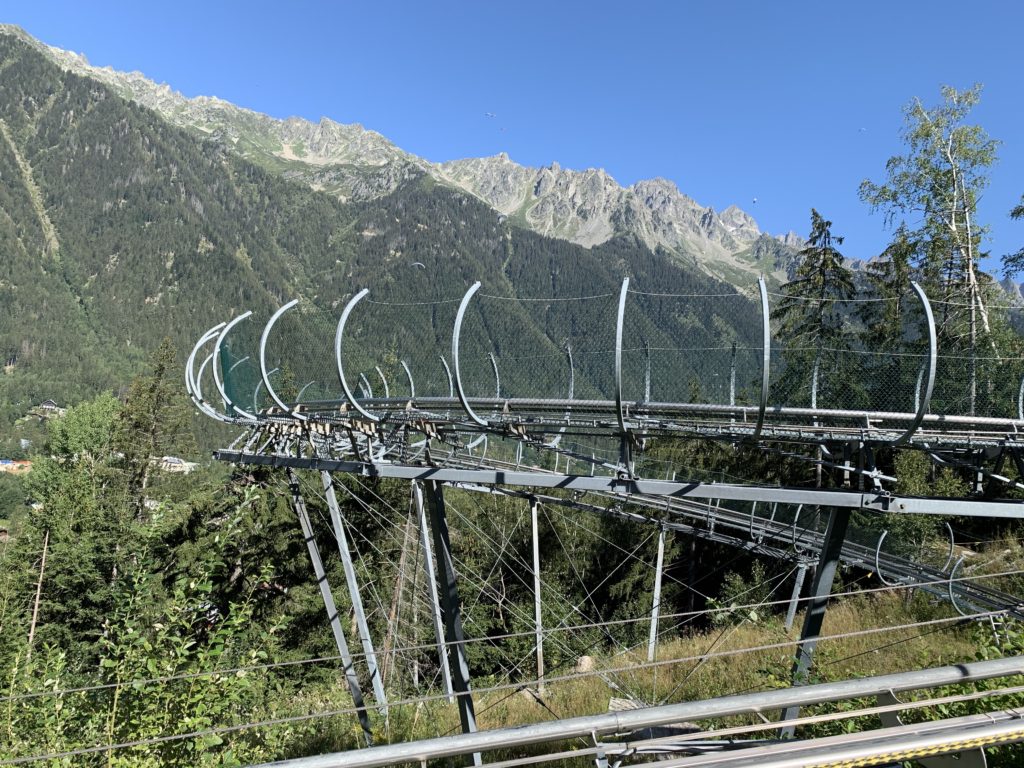
I keep climbing through woods. My Apple watch tells me I’ve climbed 75 flights of stairs in a mile and a half. A sign says is an hour more to the top. At this point I am being insufferable on the family group chat, sending a constant stream of statistics about my climb and distance. I am unstoppable. Some might even say smug.
I reach the top of the rail line at Montenvers, where I plan to rest and eat but there are long lines for the restaurant and to buy water and sandwiches. I fill my little bottle in the bathroom and hit the trail again as this part is supposed to be an “easy and pleasant” walk along the ridge to the Plan De L’Aiguille where I can catch the funicular back down.
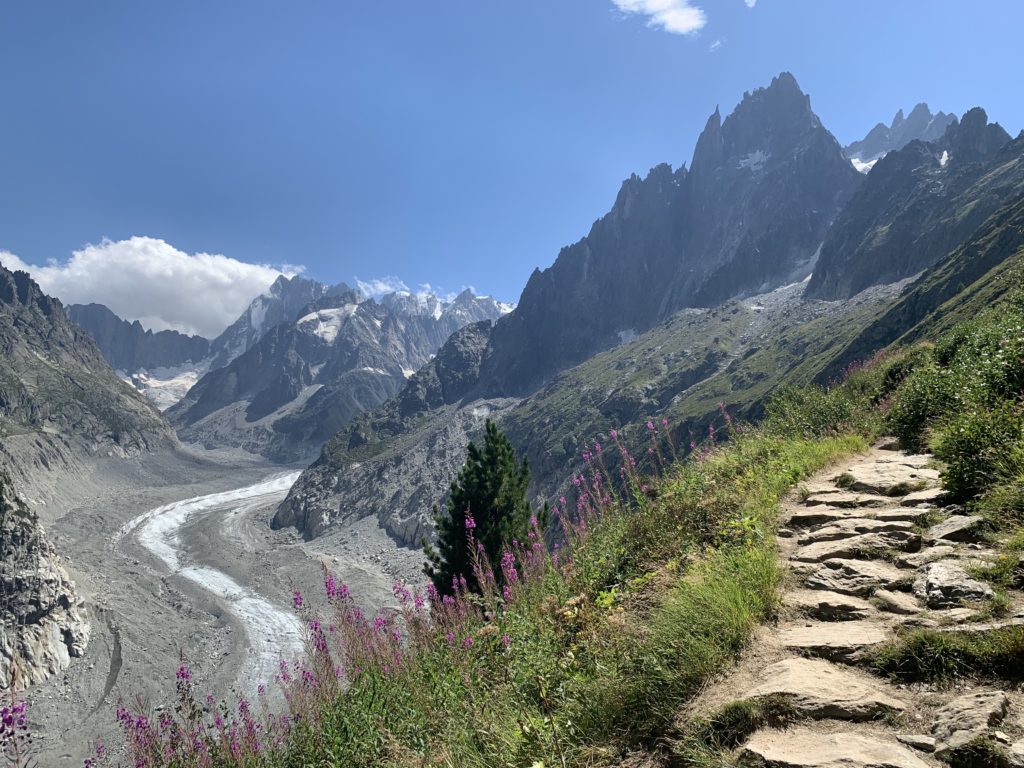
But when I get to a fork in the trail I take the “advised route” going via “Le Signal” which turns out to be a another summit. With all that implies. Off I go having no idea that I had hours more climbing ahead of me.
I arrive at the Le Signal and feel horrible. I realize that I don’t have enough water and haven’t had anything of substance to eat all day. I find myself “resting” on the trail every hundred meters or so, occasionally even laying flat on the trail to keep from getting dizzy.
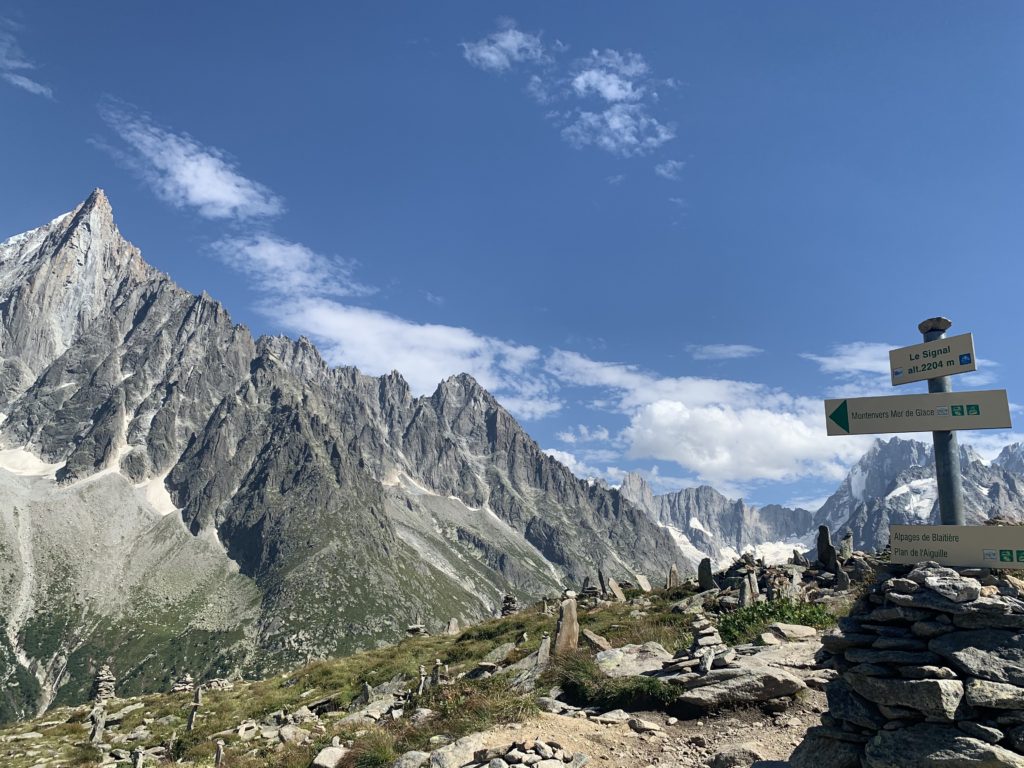
John and I have been talking and he has been tracking my location while looking at Google satellite images. He realizes I am in big trouble. I am insisting that I can go the next 2km of hard walking to get to the funicular down. He tells me to stay where I am and he calls the hotel to get the rescue helicopter.
The rescue team calls me immediately and conferences in a doctor to hear my tale of woe. He authorizes the rescue, they send me a text that I respond to that locates my exact position, and tell me that they will be there in ten minutes. And that I should put anything that can possibly fly away in hurricane force winds away in a bag.

If you squint you can see Chamonix at the bottom where my “walk” started.
I am flat on the trial, too dizzy to move, when I hear the “helo” as they referred to it lovingly several times on the call. I sit up and hold my arms in a y-shape as instructed, wondering where the hell they are going to land as the terrain is very steep. Doesn’t faze them. They hover the thing with one leg about six inches off the narrow trail and the other hanging in space. Three very cute, buff dudes hop off. One grabs me by the back of the neck like a bad puppy, forces by head down, and throws me into the helicopter. We are down in ten minutes.
Part of the reason I didn’t want to call is that I was worried about cost and that I’d probably have to spend a night or two in a hospital for observation. But no. We arrive at the bottom, get out, they take my ID, inform me that it’s all paid by the French government, and tell me to go to the nearest bus stop that is about a kilometer away to get back to town. They are clearly unimpressed by my saga. I wander away stunned. I arrive back in Chamonix and start drinking water. Liters and liters of water. I shower and my fingers are unrecognizable; they are indented like the proverbial prune. I keep drinking. 24 hours later I finally have to pee.
So, don’t hike without enough water.
Next Itch will be my following night in the chateau that smells like death with my friend the bat. Remind me again why I wanted an adventure?


